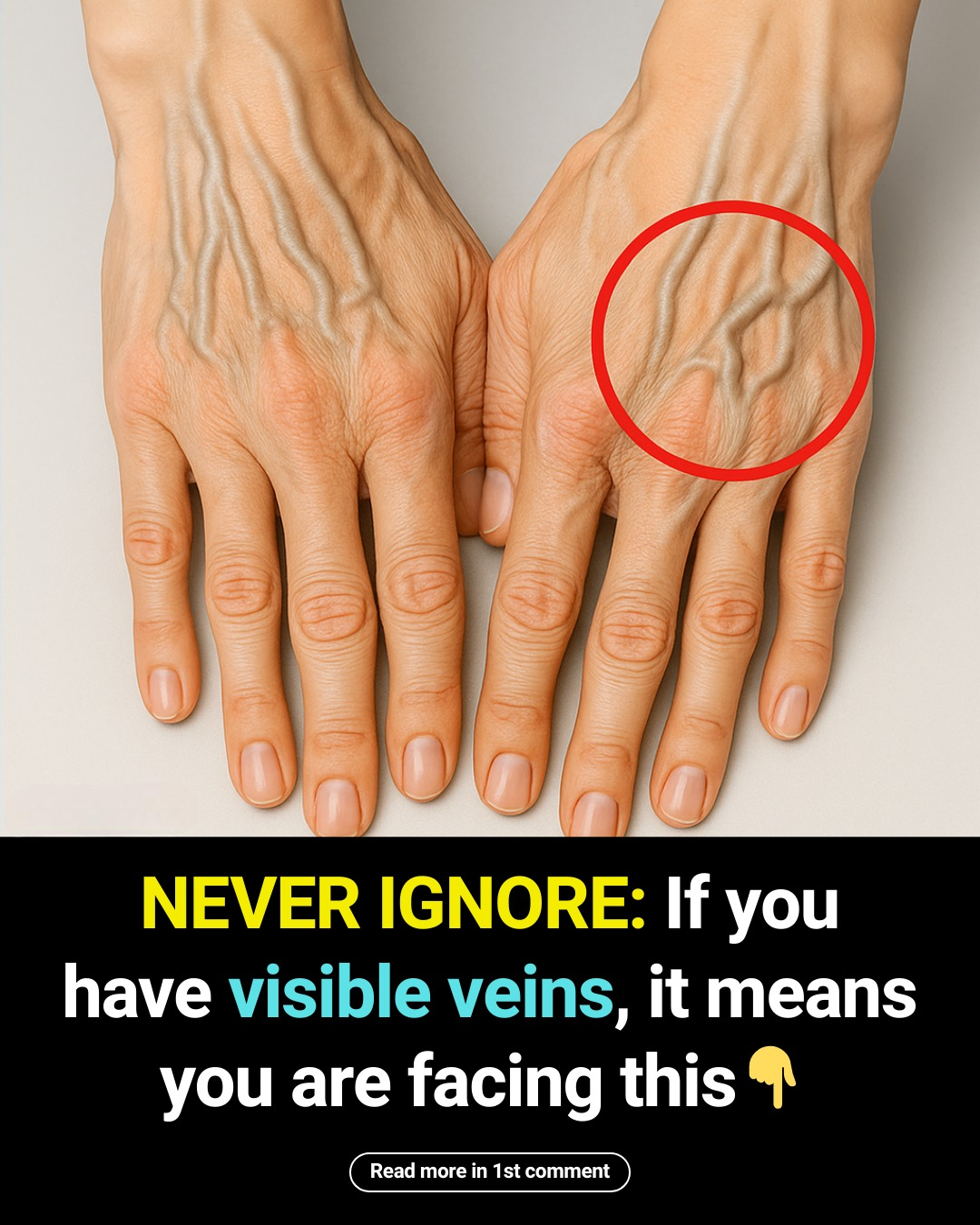When people think of bulging veins on the hands, the image that often comes to mind is aging, yet many young adults notice their veins becoming more visible and start to feel worried about their health or appearance. The truth is that visible veins in youthful hands are usually normal and rarely a cause for concern, often linked to natural body composition, skin type, genetics, and lifestyle choices rather than a medical problem.

To better understand this, it is helpful to explore the main reasons veins appear more prominent at a young age, when it could signal something worth checking with a doctor, and what can be done to make them less noticeable if they affect confidence. One of the most common reasons is low body fat. The hands naturally have very little fatty tissue compared to other parts of the body, so in people who are slim or athletic there is even less cushioning to cover the veins, leaving them closer to the skin’s surface and easier to see. This is especially true for those who maintain low body fat through genetics or dedicated fitness routines. Skin type also plays a role, since thin or fair skin makes veins look more visible due to reduced pigment and depth of tissue to mask them, often giving them a bluish or purplish tint even in healthy individuals.
Genetics is another factor that cannot be overlooked. If your parents or close relatives have prominent hand veins, you are more likely to inherit the same trait, as family history influences both skin thickness and vascular structure. Exercise and physical activity also affect vein visibility. Anyone who has noticed their veins popping out after a workout has experienced vascularity, a temporary effect caused by increased blood flow to the muscles. Over time, repeated workouts—especially strength training—can make veins appear more defined permanently, particularly in athletes and bodybuilders who maintain low fat levels and strong circulation. Environmental conditions such as hot weather contribute as well, since high temperatures cause the body to dilate surface veins to release heat, temporarily making them more prominent until the body cools down.
Hormonal changes during puberty or other fluctuations can also make veins look more visible, though these shifts are generally temporary and harmless. While most cases of visible veins are not a sign of illness, there are times when medical advice is necessary. If you notice swelling, redness, or pain in one arm or hand, it may point to deep vein thrombosis, which is serious and requires urgent treatment. Tender, inflamed veins near the surface may be a sign of superficial thrombophlebitis, sometimes linked to clots, infection, or injury.
Though rare, varicose veins can also appear in the hands, often twisted and bulging with some discomfort. If skin looks extremely fragile or translucent, it may suggest a connective tissue disorder such as vascular Ehlers-Danlos syndrome, although such cases are uncommon. Any sudden change in appearance or discomfort around the veins should be evaluated by a doctor to rule out potential risks. For those who simply want to minimize the look of visible hand veins for cosmetic reasons, there are practical strategies that can help. Staying hydrated is essential because dehydration makes the skin appear thinner and less plump, which exaggerates veins, while proper hydration improves skin elasticity and volume. Moisturizing daily with nourishing creams, especially those containing hyaluronic acid or shea butter, helps maintain skin thickness, and applying sunscreen protects against UV rays that thin the skin over time.
Building healthy muscle mass through balanced strength training can add padding beneath the skin, softening the look of veins when at rest, while also avoiding very low body fat unless it is a professional requirement. In hot weather, cooling your body down by rinsing hands in cold water or seeking air conditioning can help veins return to normal size. Clothing and accessories can also divert attention, with long sleeves, watches, or bracelets serving as subtle distractions. Keeping hands elevated instead of letting them hang can reduce pooling and bulging as well. For longer-lasting changes, non-surgical cosmetic treatments are available. Sclerotherapy involves injecting a solution that shrinks and fades veins, laser therapy uses light energy to collapse visible veins, and dermal fillers add volume to the hands to hide veins underneath.
These procedures should only be considered if vein appearance causes significant concern and should always be performed by a licensed specialist. At the same time, it is important to keep perspective—visible veins are not necessarily unattractive or undesirable. In the world of fitness, vascularity is even admired as a sign of strength and low body fat, and many people accept them as a natural part of their body. For those who prefer smoother-looking hands, however, a combination of hydration, skin care, muscle maintenance, and professional options can make a real difference. Ultimately, visible veins in young hands are usually just a natural part of anatomy influenced by genetics, body type, or lifestyle, and while they rarely signal medical problems, sudden or painful changes should never be ignored.
For anyone seeking to lessen their appearance, adopting healthy habits such as moisturizing, staying hydrated, protecting skin from the sun, and maintaining balanced muscle mass can help, with cosmetic procedures offering further options if needed. At the end of the day, visible veins are not a reflection of poor health but simply a feature of your unique body. Disclaimer: This content is for informational purposes only and should not replace medical advice. Always consult a healthcare professional for any concerns about your health or medical conditions.





